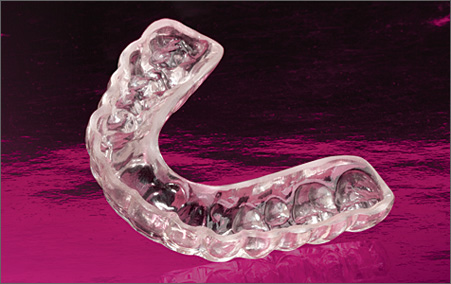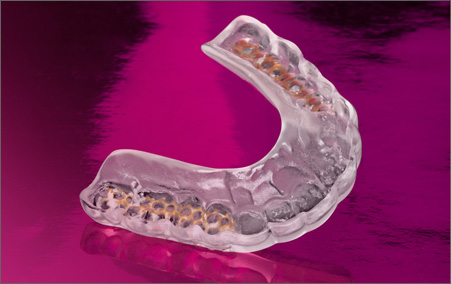A custom-made nightguard fits over the upper teeth at night and is primarily intended for protection against nighttime clenching and grinding (which is collectively called “bruxism”). They should be made of hard, durable and biocompatible plastics, and should allow for an even positioning of the teeth and the jaw to protect against the following conditions:
- EXCESSIVE TOOTH WEAR: Many people with worn-down teeth tend to grind more, which predisposes them to fractures, fillings and crowns failing, cracks, and root canals.
- ABFRACTIONS: Clenching is also associated with gumline recession and erosions, also called “abfraction” defects. One conventional explanation everyone hears is that these are due to a hard toothbrush or a wrong brushing technique. It may well be that these aggravate the condition, but the actual cause of abfractions and recession are clenching and grinding. The thin enamel layer that tapers off at the level of the gums splinters off, exposing dentine. Being softer and more prone to decay, this exposed dentine begins to wear faster, creating a defect that is also prone to cavities.
- RECESSION: The excessive rocking motion of the teeth being subjected to a dysfunctional bite or grinding causes the thin bone plate holding the teeth in place to recede, thus causing the well-known “tooth recession”. These teeth tend to become more sensitive which is the major cause for people to seek treatment.
- JAW-JOINT PROBLEMS: In many people, clenching or grinding will lead to jaw-joint (TMJ) damage. Something in the bio-functional triangle of the so-called chewing (or masticatory) apparatus, that is TEETH, MUSCLES, and TMJ, has to give. It is either tooth damage, (including periodontal bone loss and recession), muscle aches (and associated headaches), or TMJ problems.
We see that there is always an underlying reason for most conditions in the mouth and one should go beyond cliché and outdated explanations in order to properly address these.
A nightguard is the first and most conservative way to start addressing these harmful effects. It breaks the cycle of destruction within the chewing triangle.
In cases of excessive tooth wear, a collapsed bite, and a disharmonious bite, permanent solutions should be eventually achieved to restore harmony in the bite, including jaw repositioning, tooth reconstruction, orthopedic bite opening, orthodontics, physiotherapy, etc.
Typical damage caused by tooth clenching and grinding is shown in the following images…
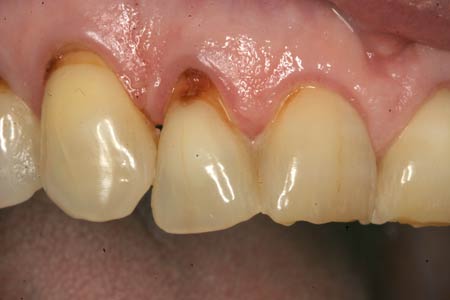
Abfraction lesion with heavy tooth wear and enamel cracks resulting from bruxism and a collapsed bite
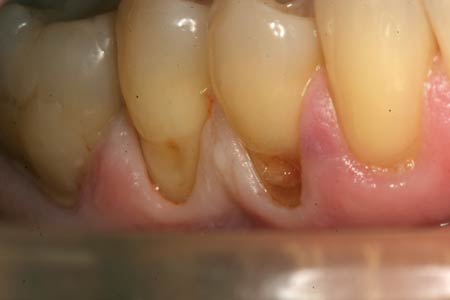
Recession with exposed dentine which has started to develop a cavity
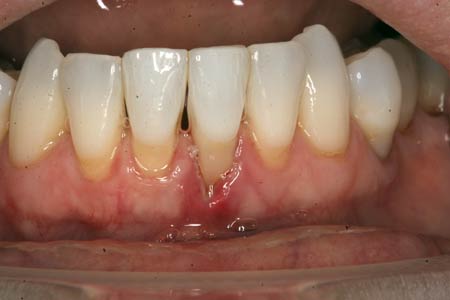
Severe recession in a lower incisor as a result of a traumatic bite between the front teeth
The following are two models of a nightguard as used at the dental clinic of Dr. Joseph Sarkissian…
